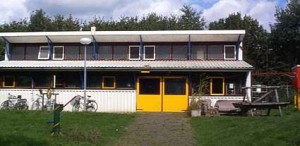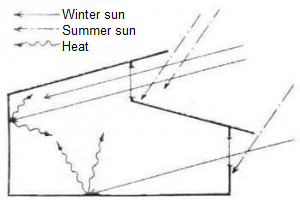Workshop the Kiwanda
“Kiwanda” means workshop in Swahili. At the Kiwanda WOT members test new techniques, fix and carry out maintenance on the site, give demonstrations, lectures and a lot more. The workshop has a large number of special homemade tools.
The building is designed according to the passive solar energy principle. This ensures the building stays warm in the winter and cool in summer. This is how
it’s done: (see diagram).
The air conditioning of the Kiwanda
1. The heat of the sun enters the building through double glazing which is facing south.
2. The heat of the sun warms the inner side of the building and the floor.
3. The excellent insulation of the building (20 cm thick) keeps the heat inside.
4. Overhanging eaves keep the sun out in summer. In the winter, when the position of the sun is lower, the sun will shine below the eaves through the windows.
Applications
The principle of passive solar energy is used in other buildings too, for instance hospitals in high altitude areas in developing countries. During the day there is plenty of sunshine, but at night the temperature drops significantly. By applying the passive solar energy principle less (scarce) firewood is needed to warm the building.


